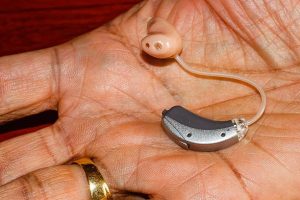Doctor Adelaide Hills: The Most Well-Known Doctors on Airline Magazines
These physicians’ names appear in glossy photo spreads in airline in-flight magazines, yet their selection criteria is questionable.
Tom Baker may be the Doctor most people think of when considering classic Who, but his average score only averages 7.81 out of 10, whereas Jon Pertwee made an impactful debut season score 8.06. Perhaps Jon would like a jellybaby instead! To know about other well-known doctor Adelaide Hills, click here.
Doctor Edward Jenner
Edward Jenner was born in Berkeley, Gloucestershire in 1749. After seven years with surgeon George Harwicke as his apprenticeship partner and two with John Hunter (famous surgeon, anatomist and biologist). While studying with Hunter, Jenner gained both surgical knowledge as well as gained insight into anatomy. With this training behind him he returned home and established a thriving medical practice before eventually returning to Gloucestershire and opening it permanently.
Jenner noticed in his practice that dairy workers who had cowpox, a mild form of smallpox similar to smallpox, seemed immune from developing more severe symptoms of the illness. Thus began his explorations into vaccination strategies.
Jenner’s vaccine proved highly successful and rapidly spread around the globe. He dedicated much of his life to spreading its use, often at great personal financial cost to himself. For this effort he received awards of PS10,000 in 1802 and PS20,000 in 1807. Jenner transformed vaccination from being seen as country superstition to an accepted medical treatment; additionally he pursued his long-standing interest in zoology by publishing articles about bird migration patterns.
Doctor Henry Gray
Henry Gray was an ambitious medical student seeking fame. While studying medicine at St George’s Hospital, he dissected each organ painstakingly before publishing several articles while still an undergraduate. Furthermore, Henry proved an exceptional teacher and lecturer.
In 1861 he was considered an early candidate for assistant surgeon position at St George’s Hospital before contracting and dying from confluent smallpox while taking care of ten-year-old nephew who had fallen sick with disease. To know about other well-known doctor Adelaide Hills, click here.
His clear teaching of anatomy translated seamlessly to his most-famous book, Anatomy Descriptive and Surgical. However, its success did not stem from any lack of competition: other authors such as Jones Quain, Xavier Bichat and Henry Vandyke Carter also published successful volumes. Ruth Richardson of Cambridge University provides us with insight into Dickensian London back streets where this remarkable collaboration took place between anatomist, surgeon, skilled illustrators, and skilled anatomists.
Doctor Elizabeth Blackwell
Elizabeth Blackwell became the first woman to obtain a medical degree and championed women’s participation in medicine. Along with Emily, she helped found the New York Infirmary for Women and Children as well as advocating for women’s rights and hygiene practices.
Elizabeth Blackwell heard from a close family friend dying from uterine cancer that seeing female doctors would have eased their suffering, so when advised against entering medical school she decided to fight the odds by saving teaching wages so she could pursue this goal instead of giving in and giving up.
Geneva Medical College in upstate New York admitted her in 1847 and she quickly took to her studies, earning the respect of both professors and classmates, eventually graduating top of her class in 1849. After that she continued training at hospitals in London and Paris but often fell back onto midwifery or nursing roles due to doctor relegations; during these experiences she stressed preventive medicine as well as cleanliness and hygiene, noting how male doctors often spread disease by not washing their hands between patients. To know about other well-known doctor Adelaide Hills, click here.
Doctor Helene D. Gayle
Gayle has dedicated her career to furthering social change worldwide, through medical research, HIV/AIDS expertise, executive director positions with both Bill & Melinda Gates Foundation and McKinsey Social Initiative, and as the inaugural Diversity Speaker Series guest of Mays Family Institute on Diverse Philanthropy at their school. On campus as the inaugural Diversity Speaker Series guest she emphasised philanthropy’s essential role in combatting global issues such as climate change.
Born and raised in Buffalo, New York, she flourished within a caring and generous environment shaped by both parents; one as a social worker and the other an entrepreneur who ran his own small-business enterprise. She attended Barnard College before earning an M.D. degree from University of Pennsylvania School of Medicine.
Prior to becoming Spelman College’s 11th president, Gayle served as president and CEO of Chicago Community Trust – one of the country’s premier community foundations – while also heading up its HIV, AIDS, TB, and Reproductive Health program at Bill & Melinda Gates Foundation.
 The earpiece sits in your ear canal, but the amplifier and microphone are in a small case that slides behind your ear. This makes RIC devices more discreet than BTE models, and they are available in a range of colours, so you can choose one that fits your hair or skin colour.
The earpiece sits in your ear canal, but the amplifier and microphone are in a small case that slides behind your ear. This makes RIC devices more discreet than BTE models, and they are available in a range of colours, so you can choose one that fits your hair or skin colour.